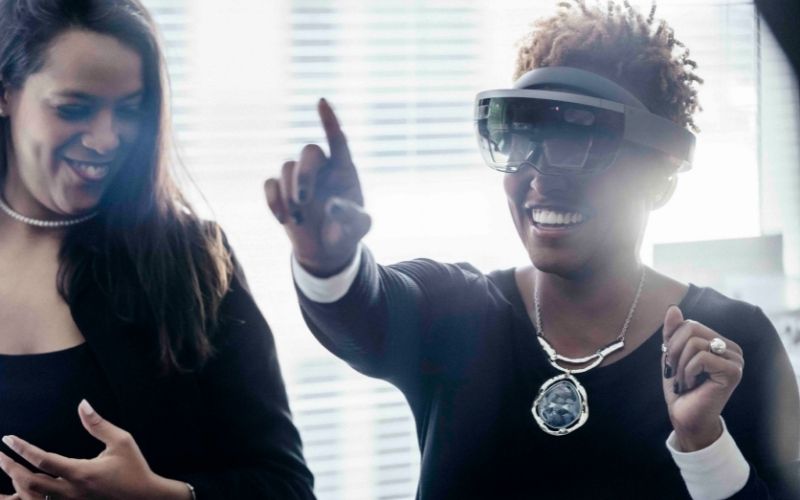Phygital: merging the physical and digital worlds for better service
Until recently, services and offerings were made either in the digital world or the physical world. Today, innovative approaches are merging the two. We investigate how phygital offerings can transform and optimize how we experience services from shopping to maintenance.

Phygital is a popular catchword at the moment, particularly in the retail sector. In short, it is the use of IoT-based technologies to seamlessly merge the physical and digital worlds so that consumers or users can experience them simultaneously in a kind of mixed reality realm. These data-driven, predictive analytic solutions are also popping up in urban planning and smart city solutions. What other potential lies in phygital solutions, and how can they enhance building management, mobility, safety, and training?
Getting phygital
We are all familiar with the physical world and have also experienced various digital worlds. But phygital worlds? Using IoT and predictive maintenance technologies, a phygital solution builds a bridge between services and offerings in the physical world and digital worlds, creating upgraded experiences.
Billions of IoT sensors, mobile devices, and connected machines generate the big data that supports the convergence of the physical and the digital. Analytics technologies take this continuous stream of contextual data and turn it into usable information, adapting it for people as they move through an environment, building, or experience a service.
The combination of physical and digital fields has already been experimented within the gaming world – think Pokémon. Other sectors that successfully implement phygital solutions include retail shops and smart city initiatives. Phygital innovations are building on the momentum created by interactive urban apps and solutions that help regulate the movement of people through buildings and shared spaces.

In building maintenance, the future is here
Many building management and mobility solutions are already embracing cutting-edge digital technologies. Take the cloud and IoT-based platform for elevator maintenance, MAX, which optimally harnesses real-time data to predict issues before they occur. Elevators run more smoothly, and downtime is reduced by 50%.
The Microsoft HoloLens is also helping maintenance and repair teams to address issues even before they arrive on site. The mixed reality device will allow service technicians to visualize and identify problems with elevators ahead of a job and have remote, hands-free access to technical support when on the job site.
Even on a smaller scale, in-home mobility providers have found ways to optimize services using an interactive merging of digital and physical data. When consulting on a stairlift, a salesperson can use the HoloLens to scan and measure a staircase and share data in real-time. In the end, the customer receives an immediate augmented-reality (AR) visualization of how the installation will look.
These innovations are driving the norms in building services and lay the groundwork for the exploration and acceptance of up-and-coming phygital solutions.



This cloud- and IoT-based platform makes digitally-enhanced service and predictive maintenance a reality – always available and always safe, thanks to real-time communication.
Phygital training, phygital maintenance
On the TK Elevator Seed Campus, trainees are benefiting from new VR training that simulates tasks that employees would potentially encounter in their daily routine. These VR courses combined with on-site training and live simulations enable a whole new level of interactive learning. The VR training will be particularly helpful in closing the gap between a job start and the first few days of onboarding.
What’s key about these new solutions is that they bring education and much-needed information to the places they are needed. QR Codes, for example, can be used to provide on-demand, point-of-use access to training content. A pilot project is testing placing QR codes on a machine or unit for service technicians to generate how-to videos or diagrams and other reference materials that pertain to the immediate physical site.



Opening new worlds in urban living and mobility
In virtually every sector and area of life, we will see more phygitalization of services. It opens up access to digital assets and materials on a physical site and makes it easier for users to switch between physical and digital offerings.

